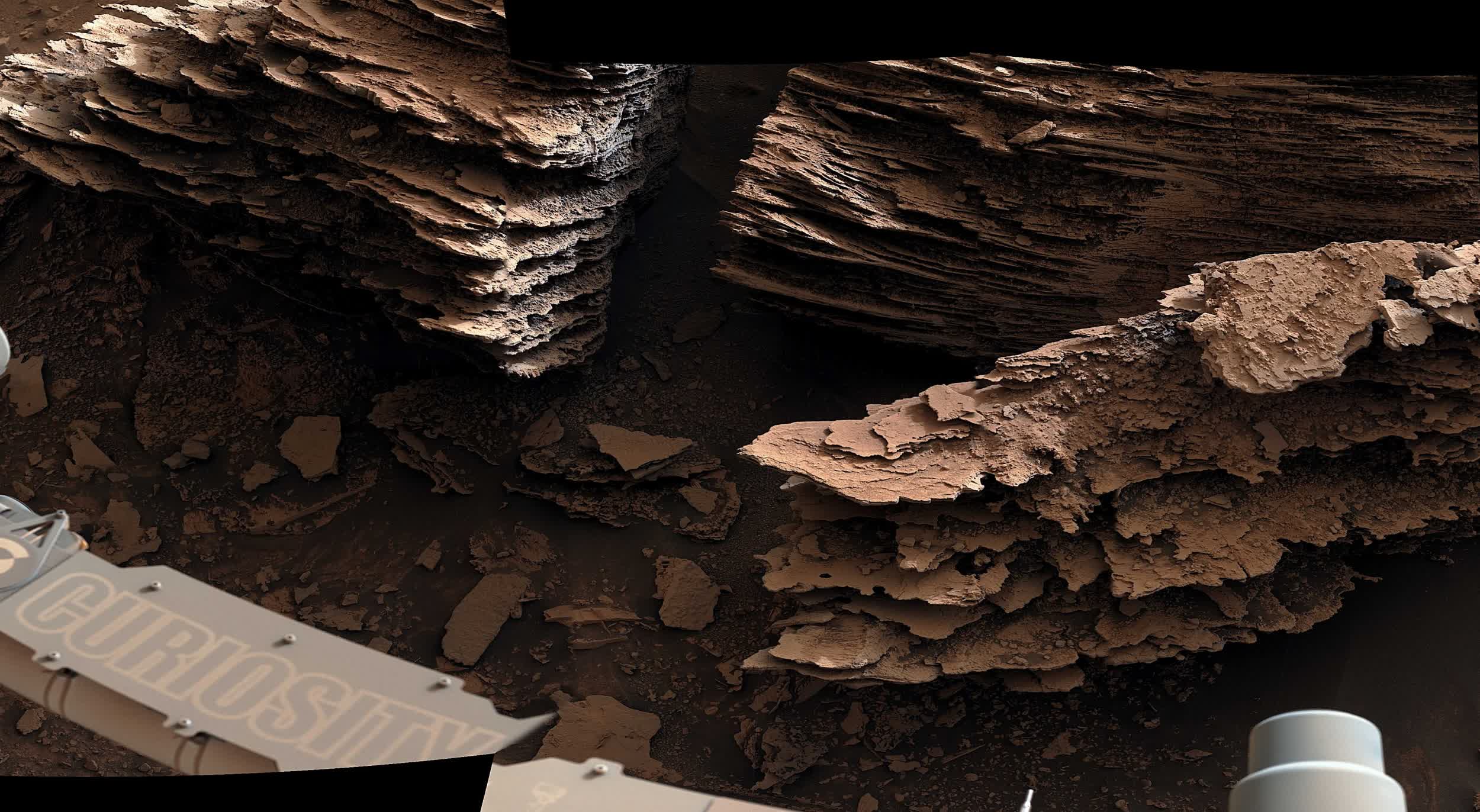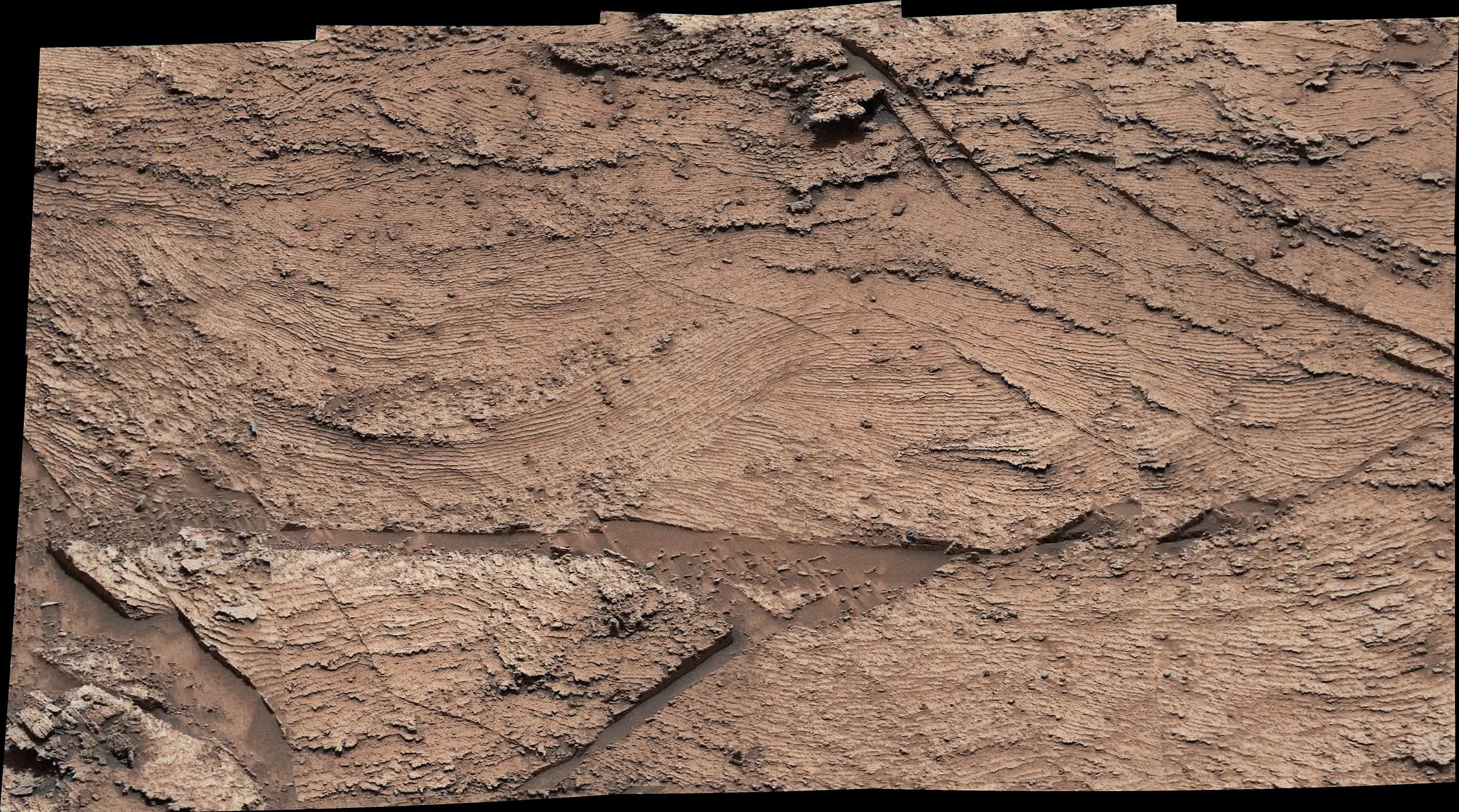What just happened? NASA has shared images recently captured by Curiosity as the rover travels from a clay-rich region on Mars to one primarily comprised of a salty mineral known as sulfate. The space agency chose these two regions in hopes of learning more about the planet's watery past but as it turns out, the transition area between them is proving to be quite enlightening.

The photo above is a mosaic comprised of six images captured by Curiosity's mast camera on June 2, 2022. It is believed that the flaky rock layers depicted in the photo formed in an ancient pond or streambed.
Curiosity has been making its way up the foothills of a three-mile-high mountain known as Mount Sharp since 2014. At the base is the clay-rich area, which likely was once home to flowing streams and lakes. Higher up in the transition zone, observations suggest the streams dissipated into trickles. Eventually, sand dunes formed above the lake sediments.
"We no longer see the lake deposits that we saw for years lower on Mount Sharp," said Ashwin Vasavada, a Curiosity project scientist at NASA's Jet Propulsion Laboratory. "Instead, we see lots of evidence of drier climates, like dry dunes that occasionally had streams running around them. That's a big change from the lakes that persisted for perhaps millions of years before."

(This image was captured on May 19, 2022, by Curiosity's mast camera)
NASA said the rover will soon drill its final sample in the transition region to get a better look at the changing mineral composition of the rocks.
Curiosity touched down on Mars way back in August 2012 and has been studying the Red Planet's climate and geology ever since. Unsurprisingly, the rover is starting to show signs of wear after nearly a decade of operation. One of its aluminum wheels has lost several of its treads, but that doesn't seem to be a major concern.
"We have proven through ground testing that we can safely drive on the wheel rims if necessary," said Megan Lin, Curiosity's project manager at JPL.
https://www.techspot.com/news/95066-curiosity-rover-finds-more-evidence-ancient-watery-regions.html